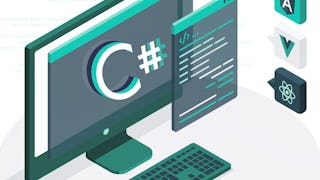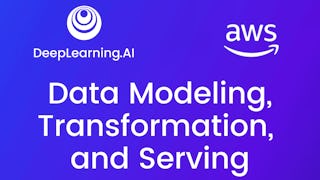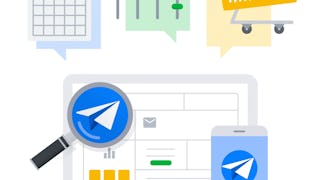Filter by
SubjectRequired
LanguageRequired
The language used throughout the course, in both instruction and assessments.
Learning ProductRequired
LevelRequired
DurationRequired
SkillsRequired
SubtitlesRequired
EducatorRequired
Explore the UML Diagram Course Catalog
 Status: Free Trial
Status: Free TrialUniversity of Colorado Boulder
Skills you'll gain: Statistical Inference, Statistical Modeling, Statistical Hypothesis Testing, Regression Analysis, R Programming, Data Ethics, Statistical Methods, Data Analysis, Statistical Analysis, Data Modeling, Predictive Modeling, Probability & Statistics, Advanced Analytics, Correlation Analysis, Forecasting, Data Science, A/B Testing, Machine Learning, Classification And Regression Tree (CART), Linear Algebra
 Status: Free Trial
Status: Free TrialSkills you'll gain: Unified Modeling Language, Visual Basic (Programming Language), Database Management, System Software, Databases, Relational Databases, Algorithms, Computer Architecture, Network Security, Computer Hardware, SQL, Computer Science, Development Environment, Data Structures, Object Oriented Programming (OOP), Object Oriented Design, Data Modeling, Program Development, Microsoft Development Tools, .NET Framework

Jordan University of Science and Technology
Skills you'll gain: Object Oriented Programming (OOP), Object Oriented Design, C# (Programming Language), Data Structures, Software Development, Computer Programming, Programming Principles, Debugging, Development Testing, Query Languages
 Status: Free Trial
Status: Free TrialDeepLearning.AI
Skills you'll gain: Data Modeling, Data Transformation, Data Processing, Data Warehousing, Apache Hadoop, Data Integration, Extract, Transform, Load, Data Pipelines, Apache Spark, Data Manipulation, Star Schema, Applied Machine Learning, Real Time Data, Machine Learning, Natural Language Processing
 Status: Free Trial
Status: Free TrialGoogle Cloud
Skills you'll gain: Application Deployment, Application Development, Data Integration, Cloud Applications, User Interface (UI), Spreadsheet Software, User Centered Design, Web Applications, Data Modeling

MongoDB Inc.
Skills you'll gain: MongoDB, Database Management, Databases, NoSQL, Data Modeling, Query Languages, Data Integrity, Performance Tuning, Scalability
 Status: Free
Status: FreeCoursera Project Network
Skills you'll gain: Microsoft PowerPoint, Presentations, Data Visualization, Data Storytelling, Drive Engagement, Productivity Software
 Status: Free Trial
Status: Free TrialMultiple educators
Skills you'll gain: Sustainability Reporting, Corporate Sustainability, Environmental Social And Corporate Governance (ESG), Energy and Utilities, Business Reporting, Organizational Leadership, Strategic Leadership, Environmental Resource Management, Business Leadership, Product Engineering, Initiative and Leadership, Electrical Power, Business Ethics, Leadership Development, Product Development, Environment, Environmental Engineering, Industrial Design, Community Organizing, Waste Minimization

Peking University
Skills you'll gain: Object Oriented Design, Unified Modeling Language, Object Oriented Programming (OOP), Software Development, Program Development, Software Architecture, Software Engineering, Software Design, Software Development Methodologies, System Design and Implementation, Systems Analysis, Technical Design, Requirements Analysis
 Status: Free Trial
Status: Free TrialSkills you'll gain: Microsoft Power Platform, Productivity Software, Data Integration, Data Modeling, Application Development, Business Intelligence, Self Service Technologies, Real Time Data, Data Security
 Status: Free Trial
Status: Free TrialSkills you'll gain: Peer Review, Project Management, Project Management Life Cycle, Agile Project Management, Project Portfolio Management, Project Closure, Project Controls, Work Breakdown Structure, Backlogs, User Story, Project Planning, Project Documentation, Project Performance, Risk Management, Stakeholder Management, Quality Management, Communication Planning, Change Management

Edureka
Skills you'll gain: Dashboard, Power BI, Data Transformation, Data Modeling, Interactive Data Visualization, Microsoft Power Platform, Data Visualization Software, Business Intelligence, Predictive Analytics, Microsoft Excel, Data Analysis, Data Integration, Data Cleansing, Key Performance Indicators (KPIs)
UML Diagram learners also search
In summary, here are 10 of our most popular uml diagram courses
- Statistical Modeling for Data Science Applications: University of Colorado Boulder
- Introduction to Computer Programming with Visual Basic: LearnQuest
- Object Oriented Development using C#: Jordan University of Science and Technology
- Data Modeling, Transformation, and Serving: DeepLearning.AI
- Building No-Code Apps with AppSheet: Foundations: Google Cloud
- Introduction to MongoDB: MongoDB Inc.
- Data Visualization in Microsoft PowerPoint: Coursera Project Network
- Applied Sustainability for Technical Managers: University of Colorado Boulder
- 面向对象技术高级课程(The Advanced Object-Oriented Technology): Peking University
- Introduction to Microsoft Power Platform: Microsoft










